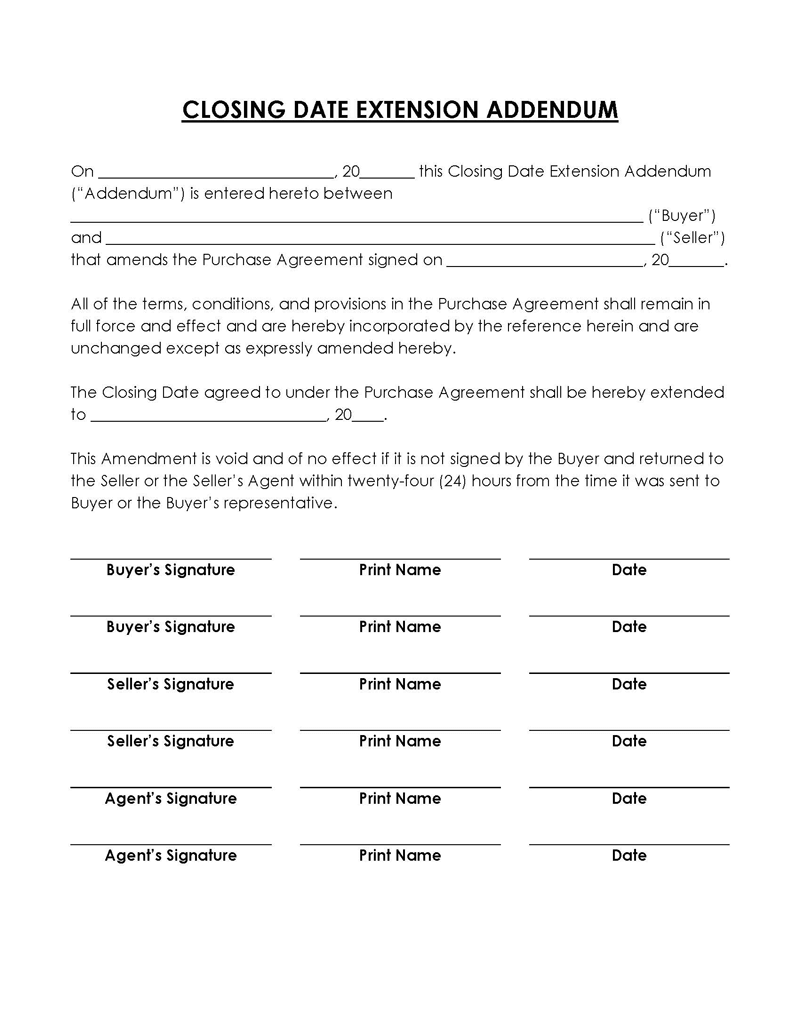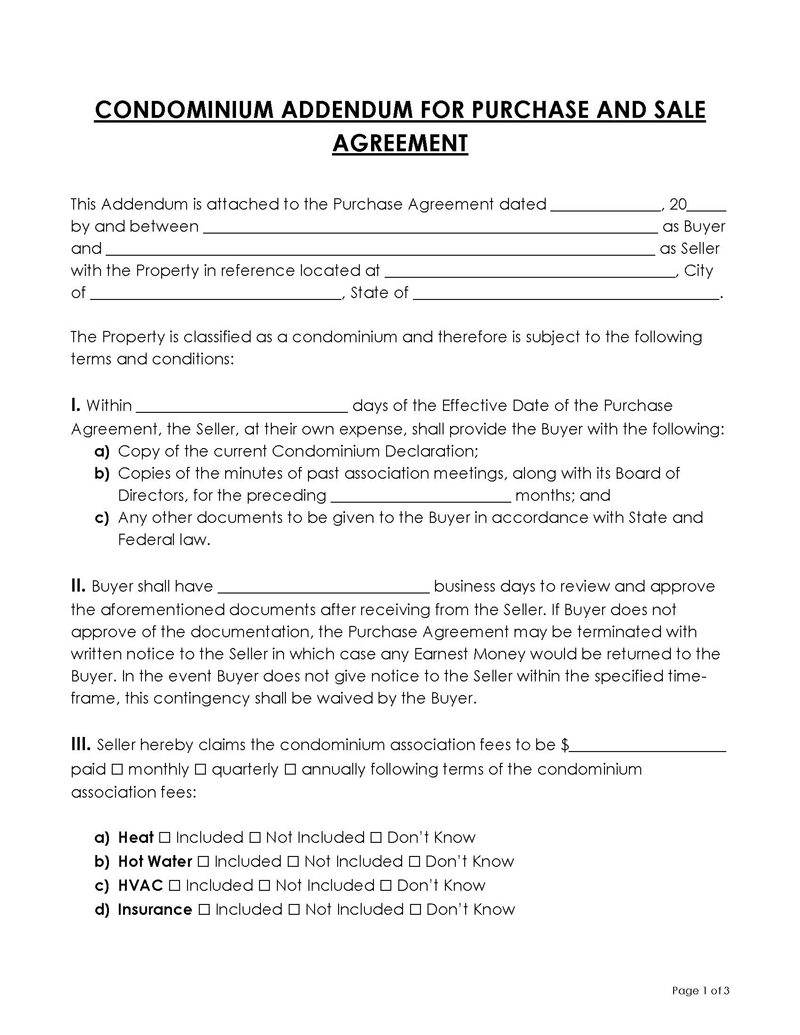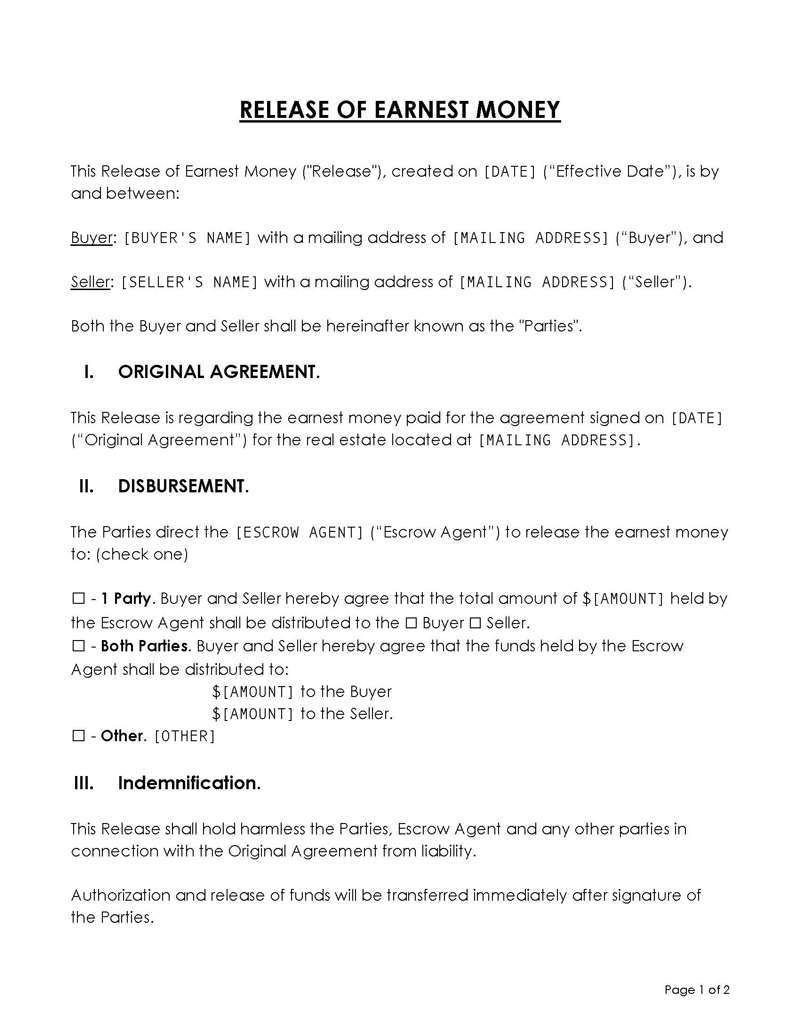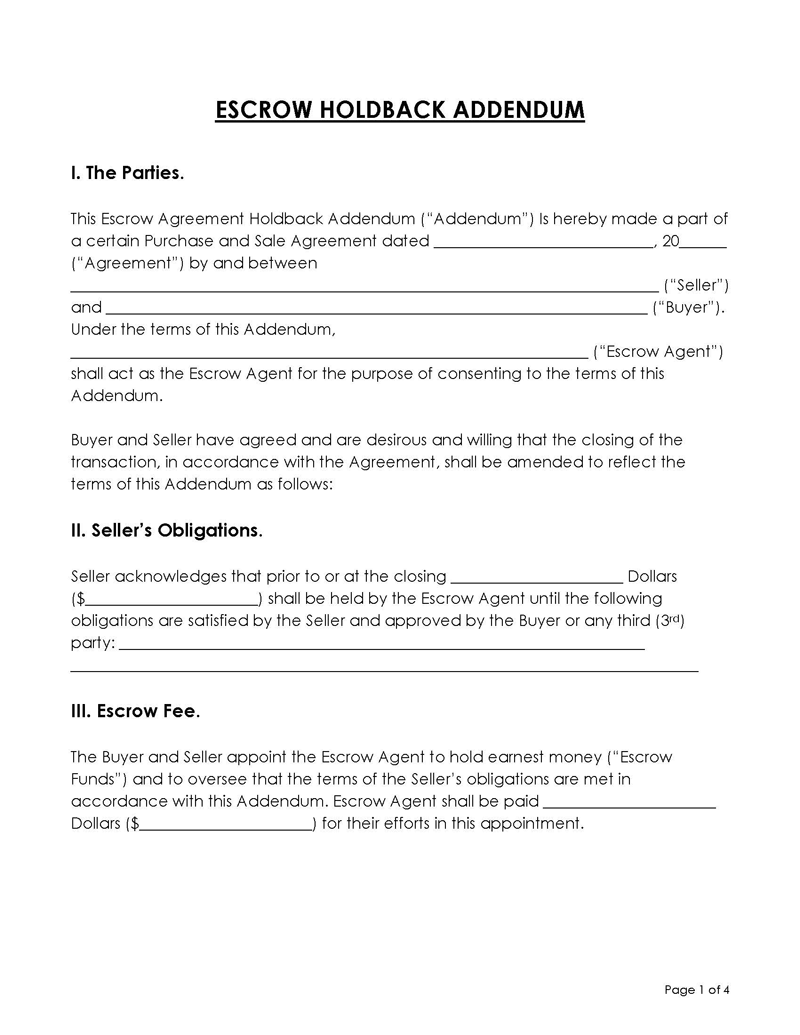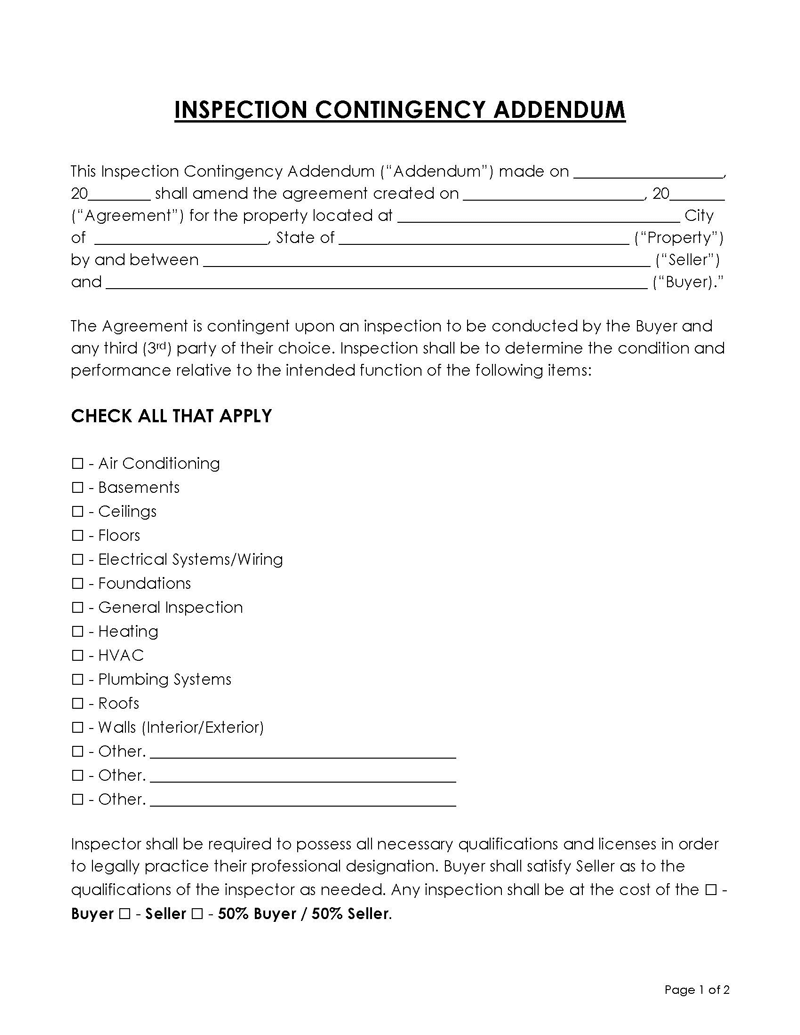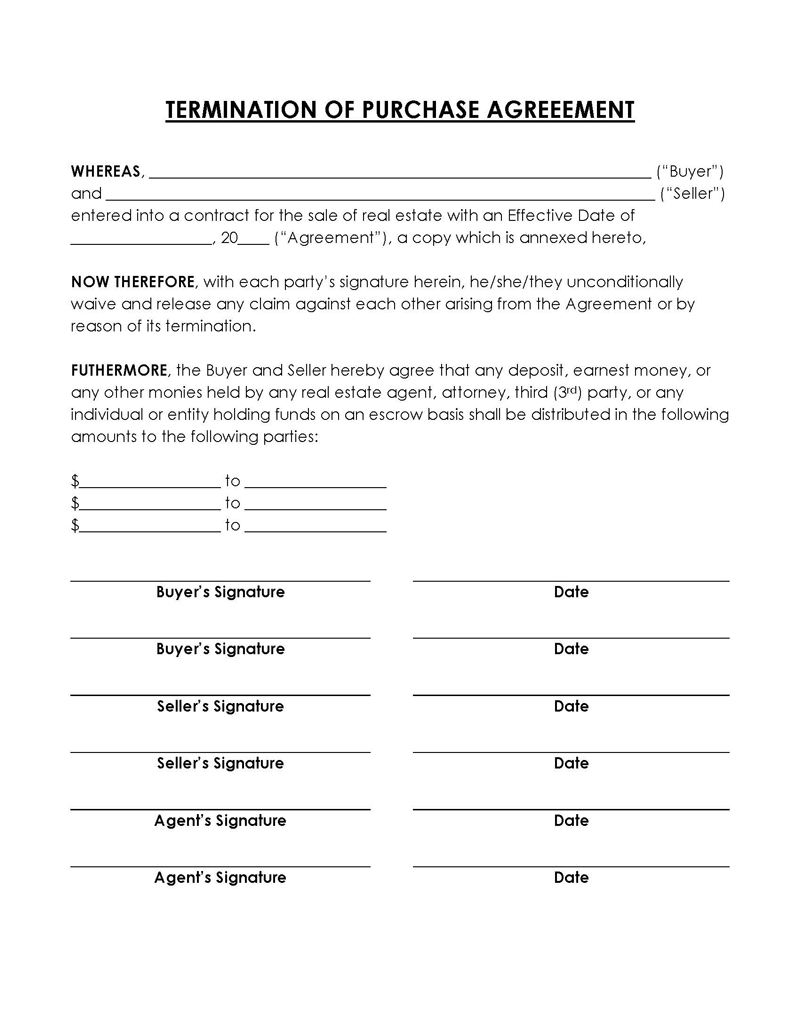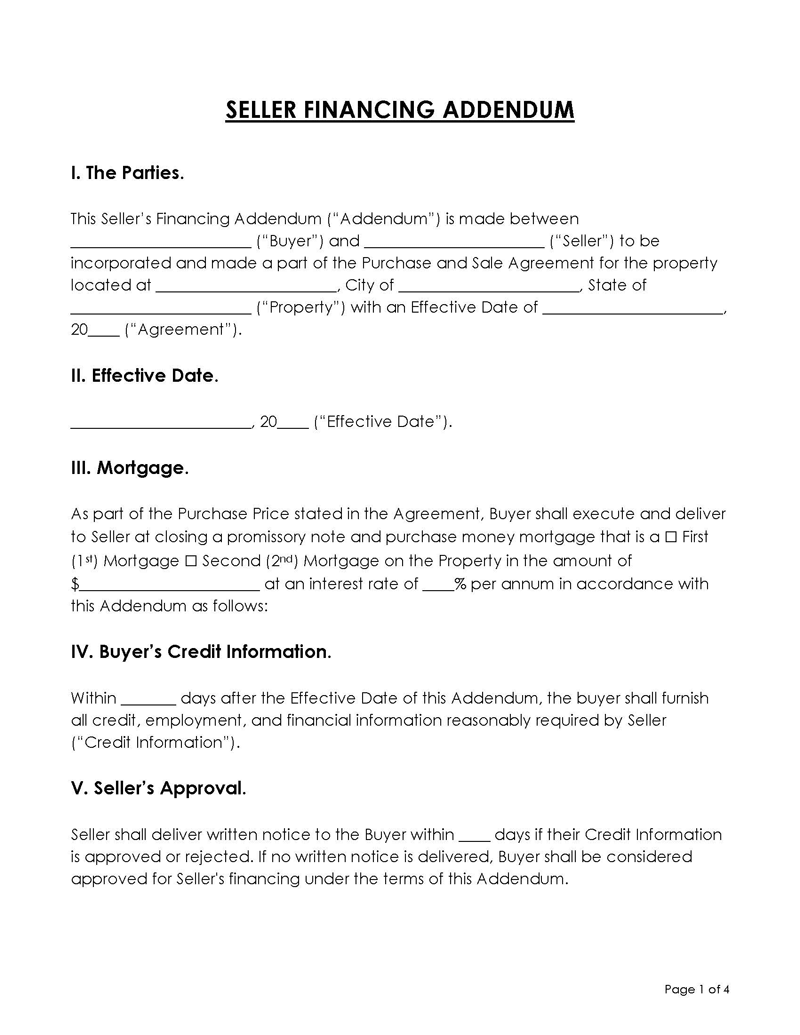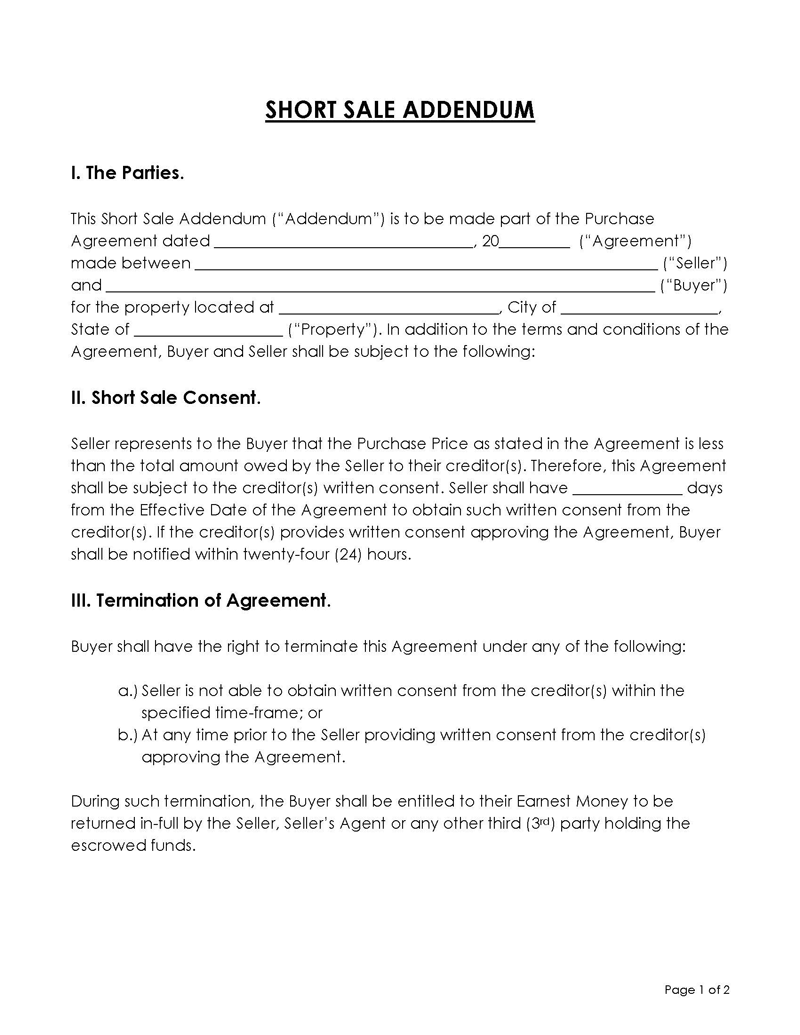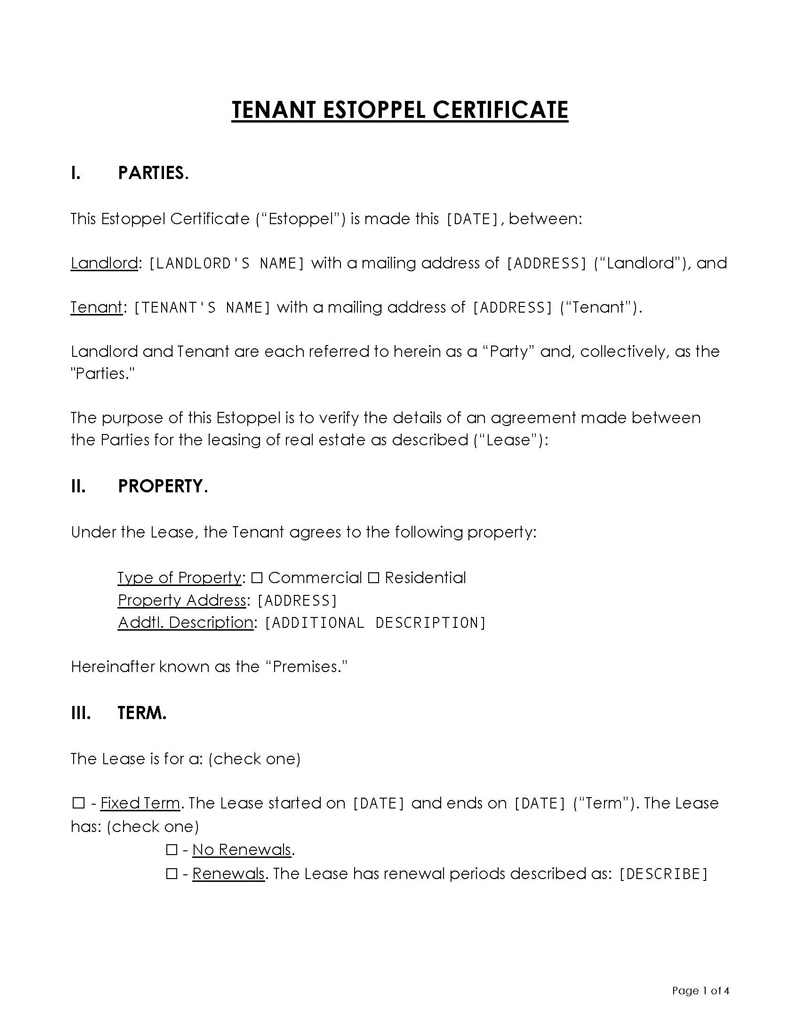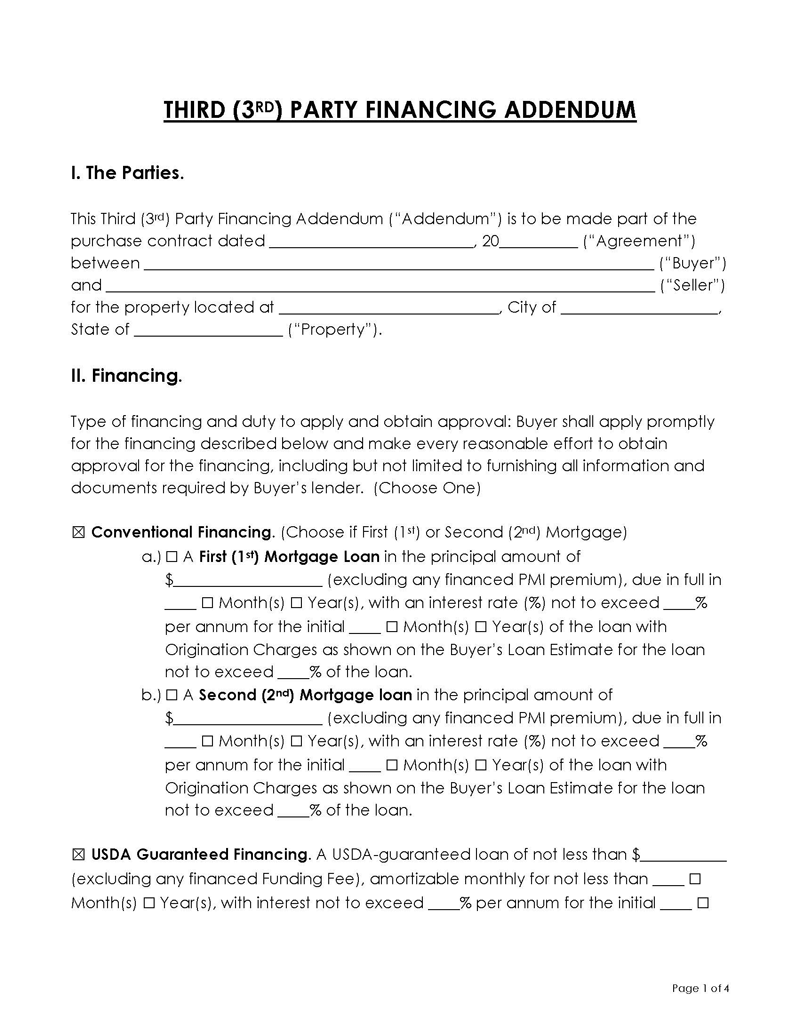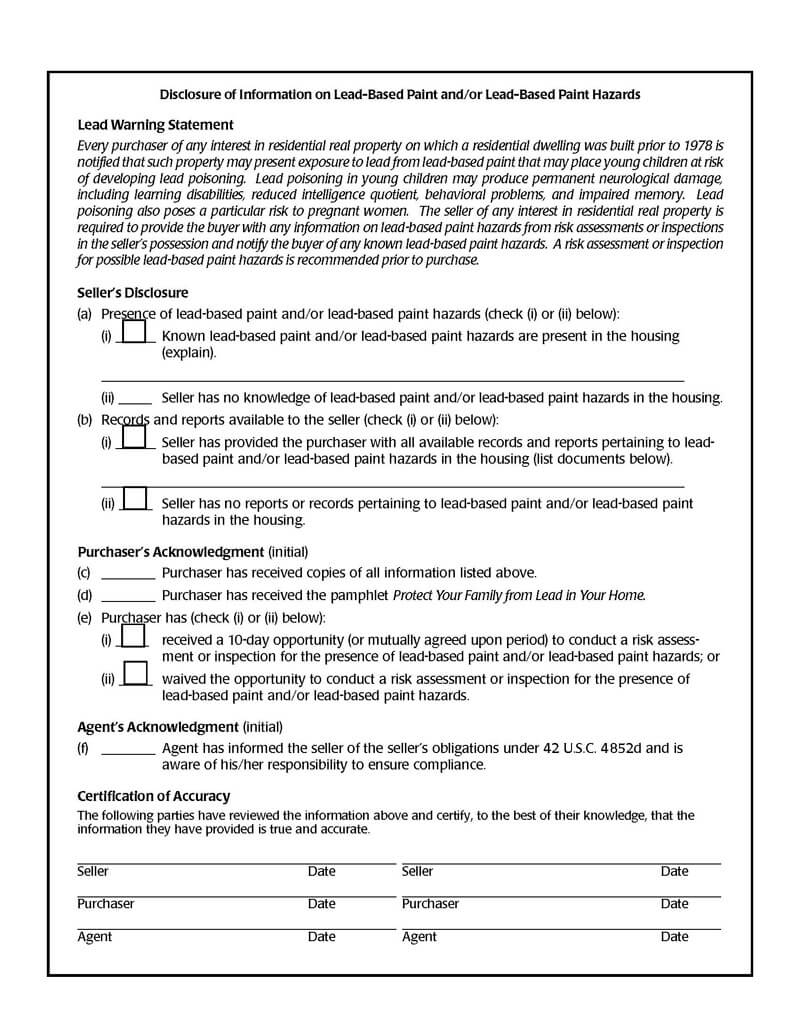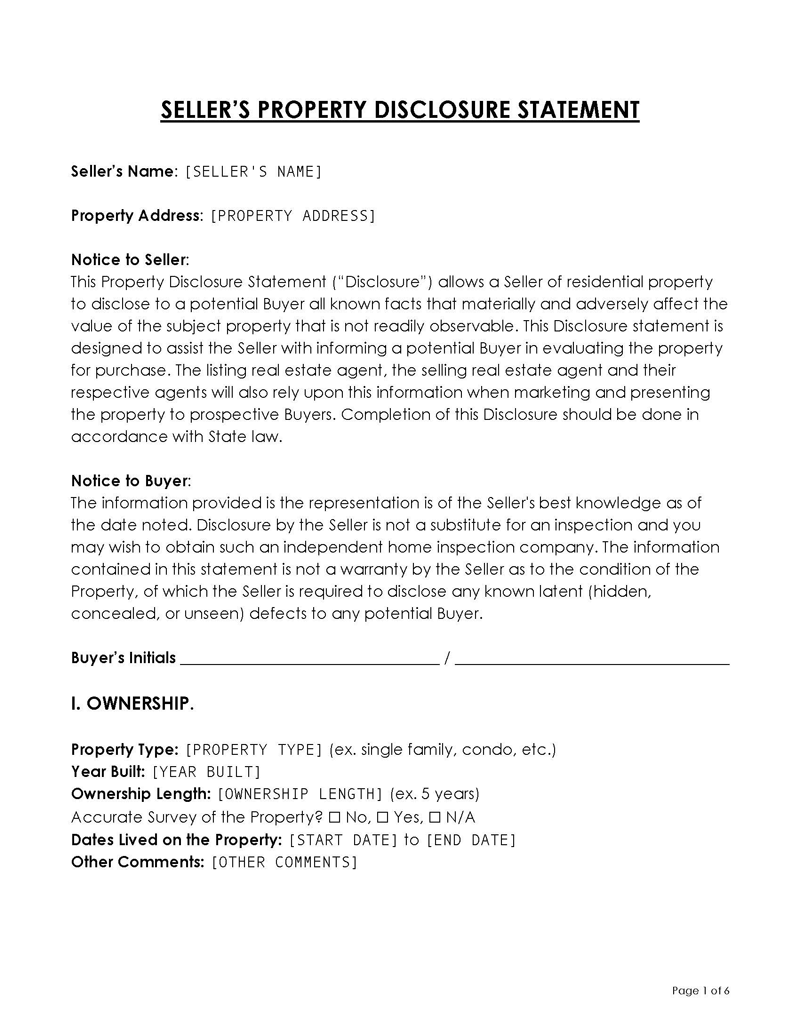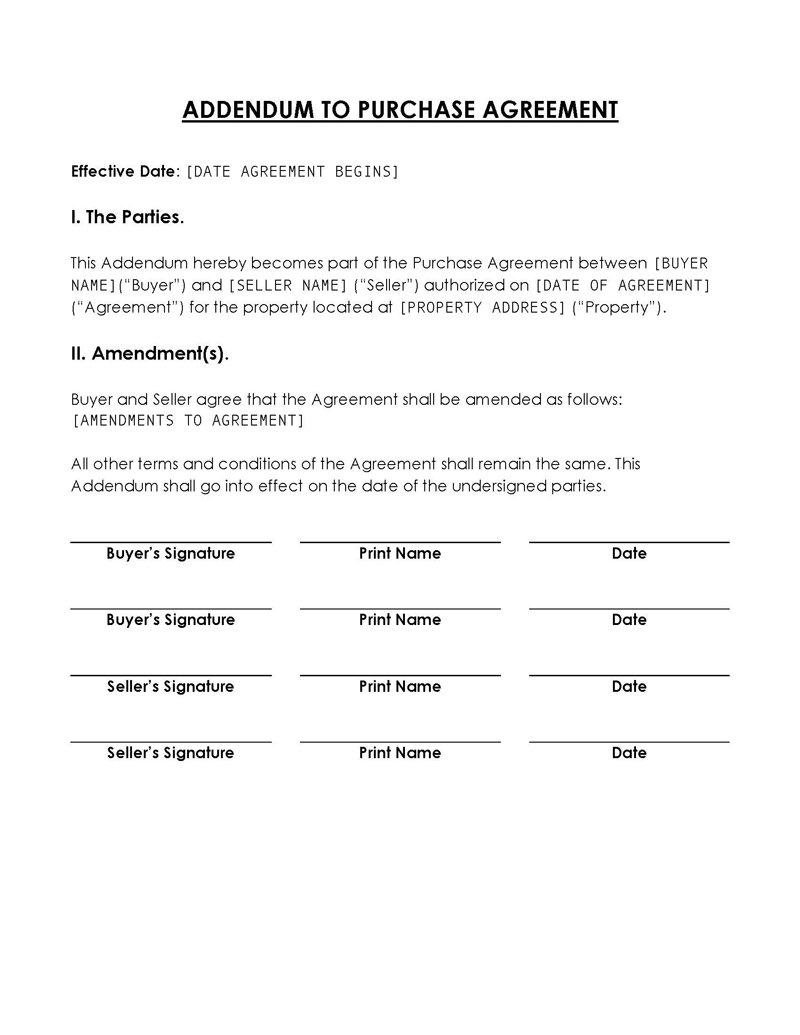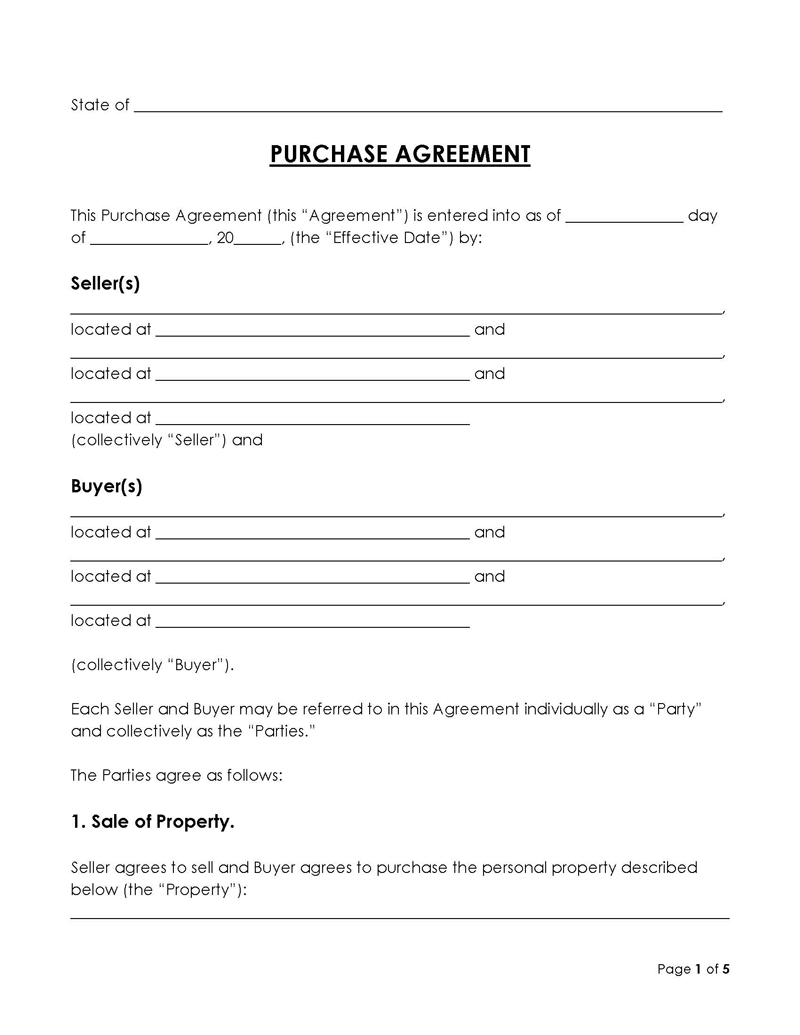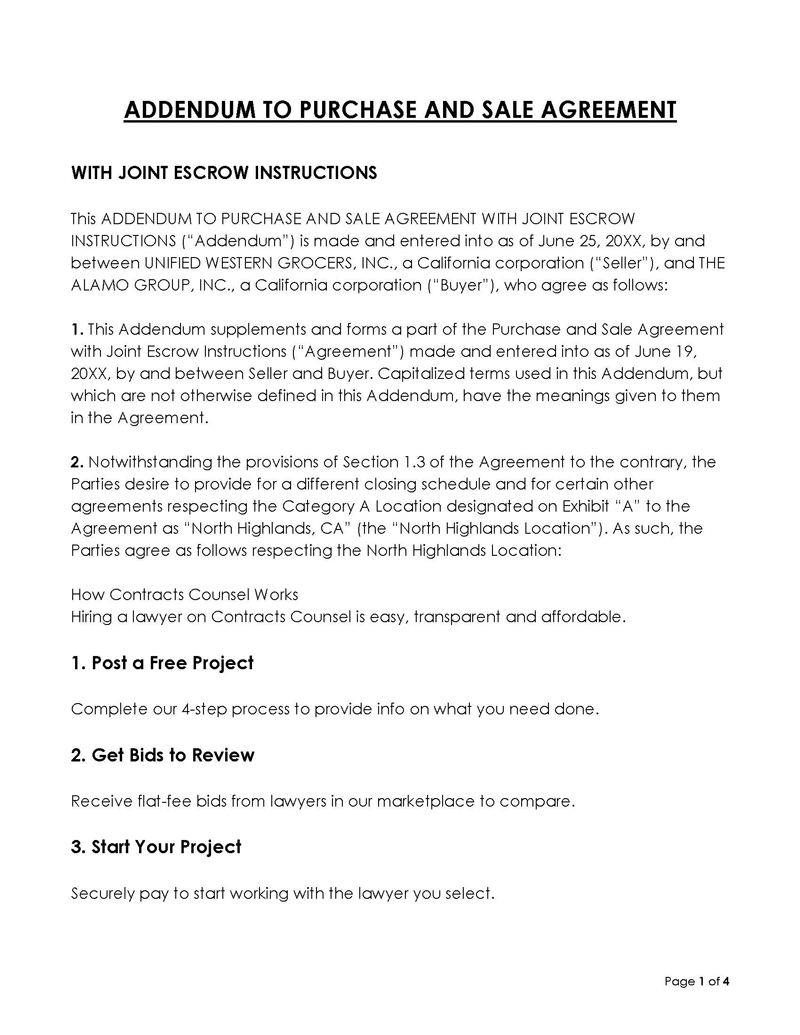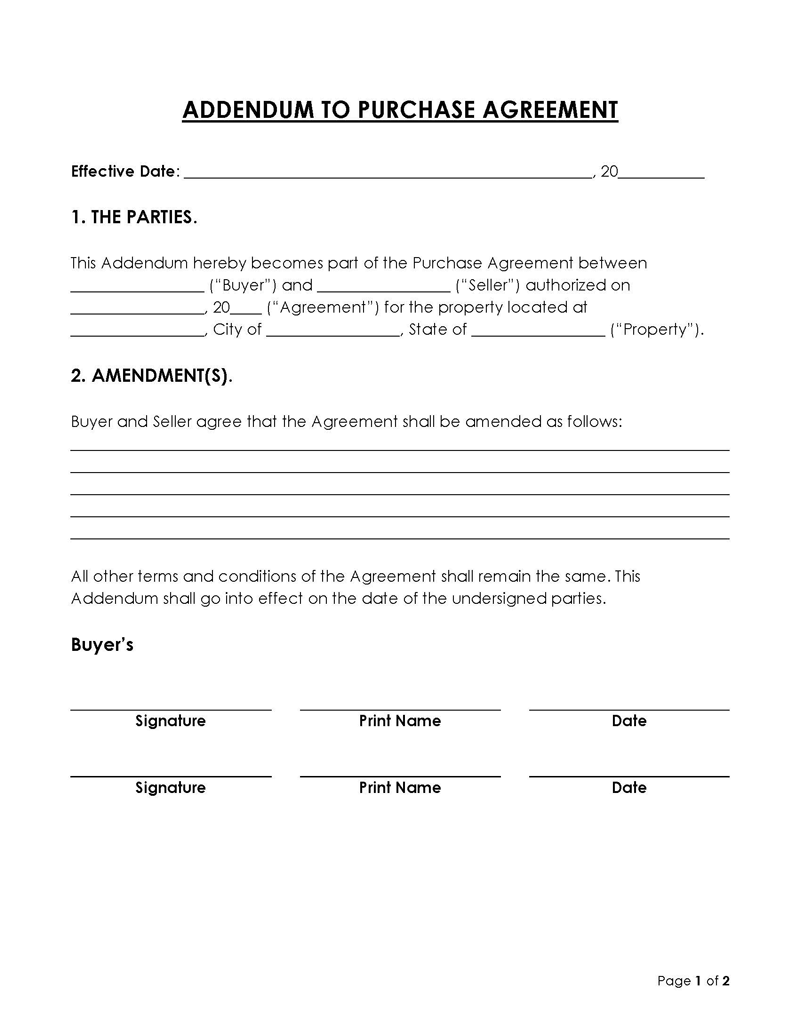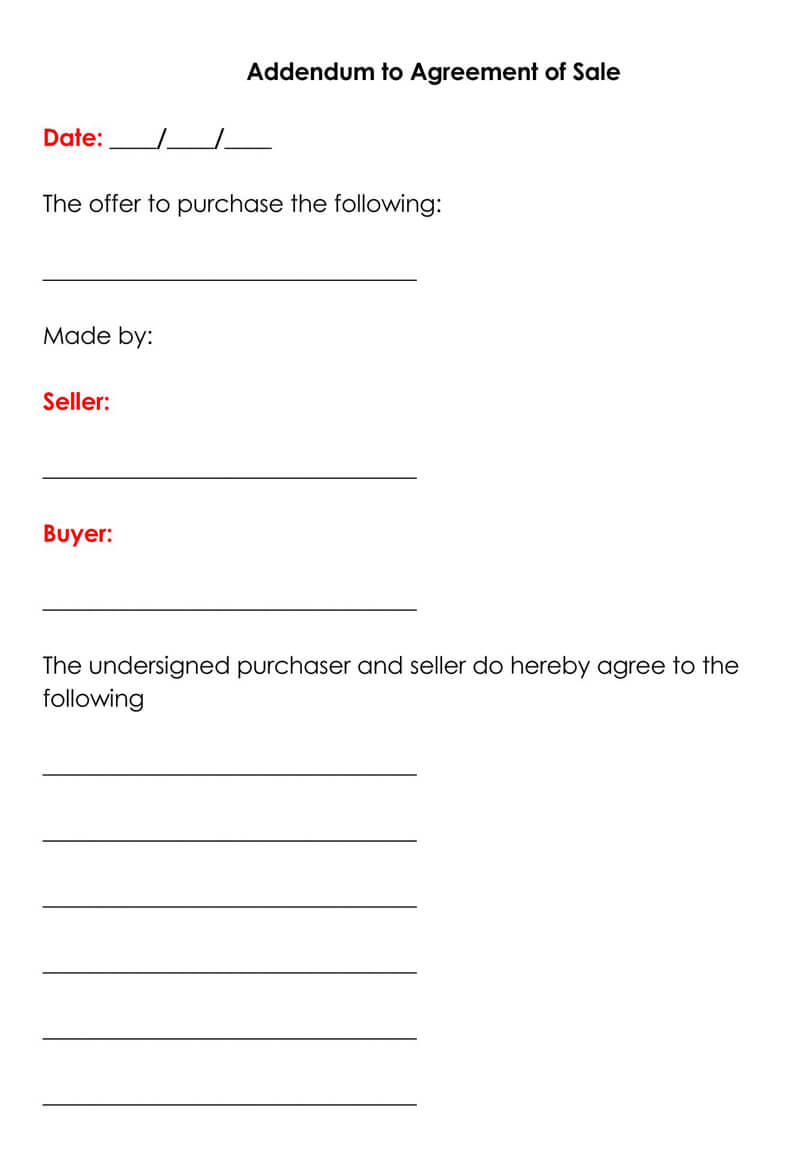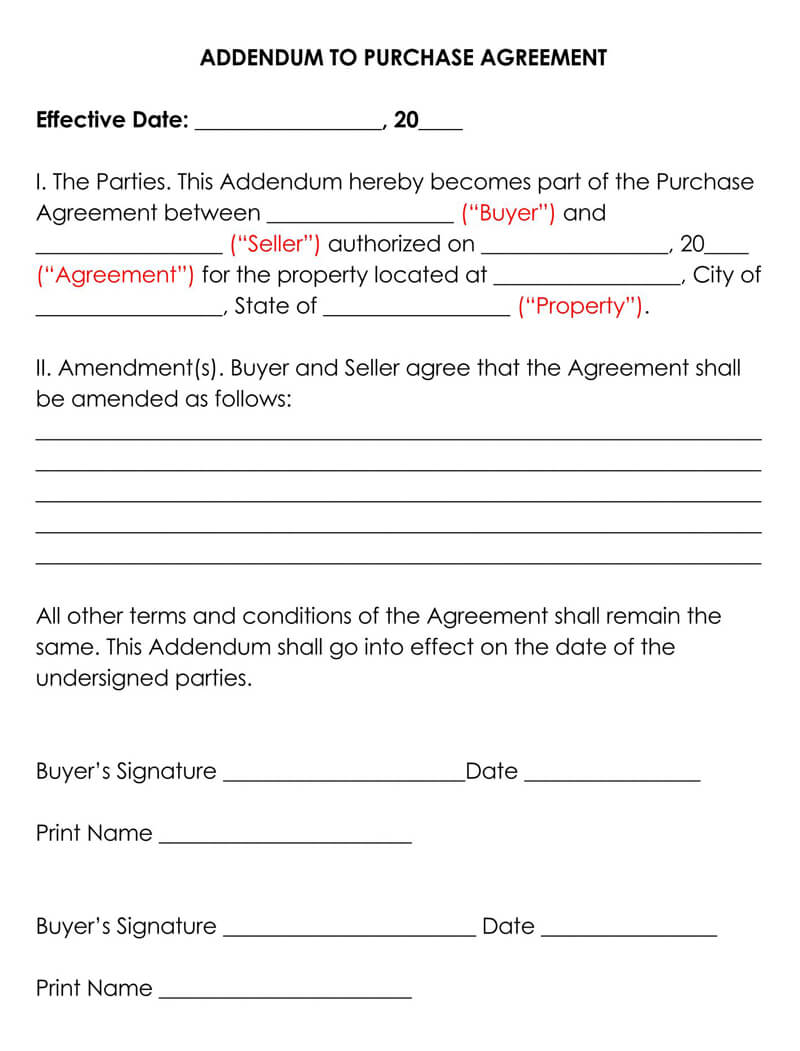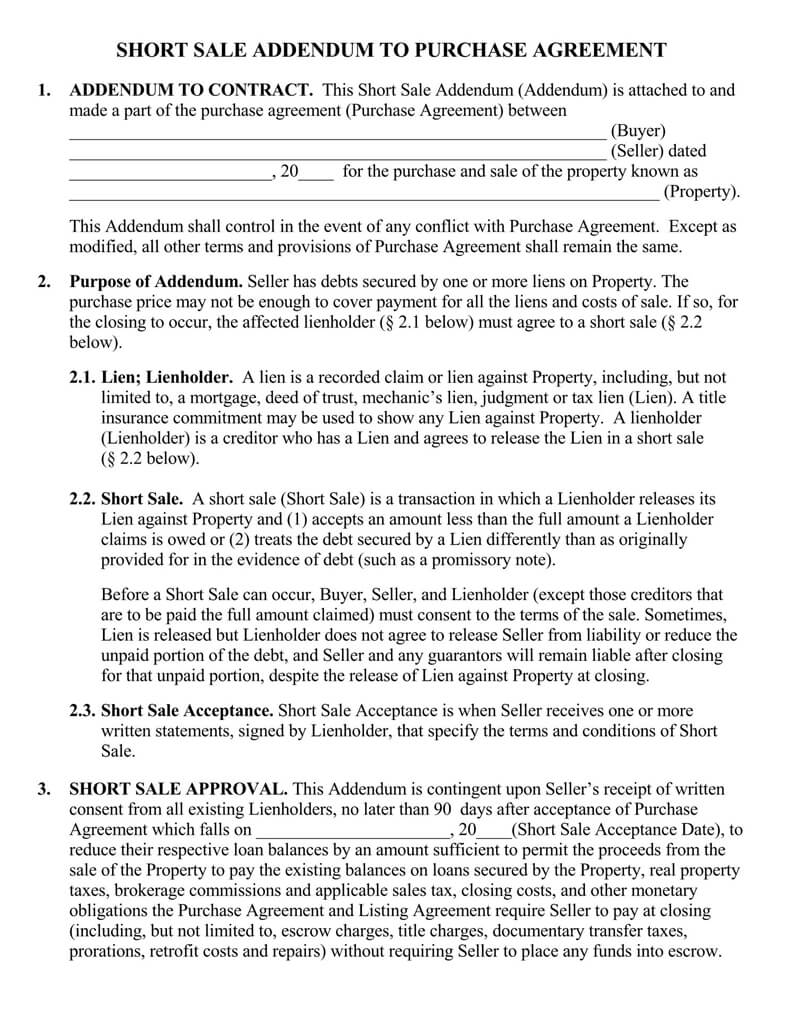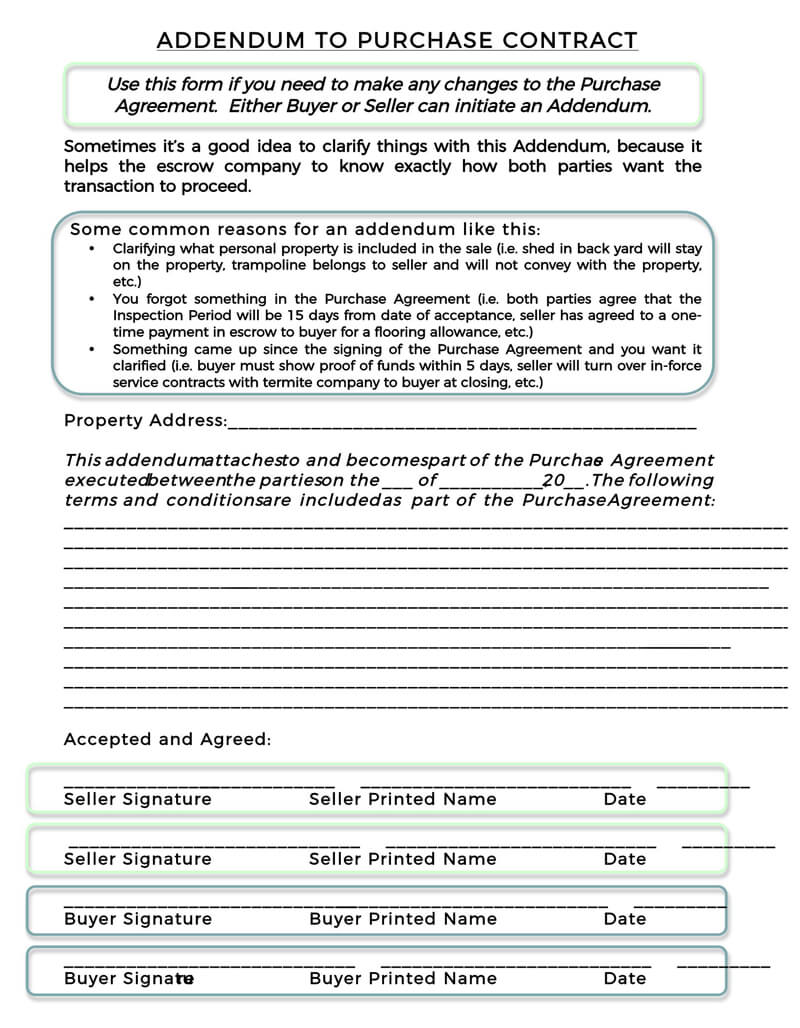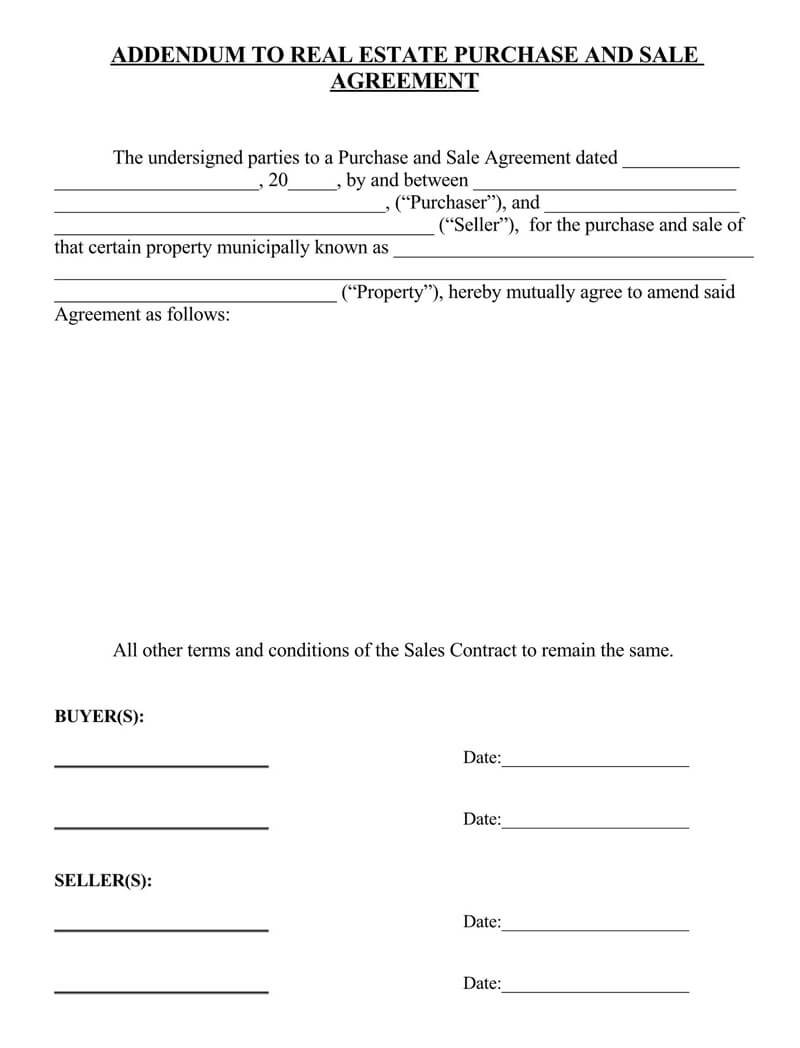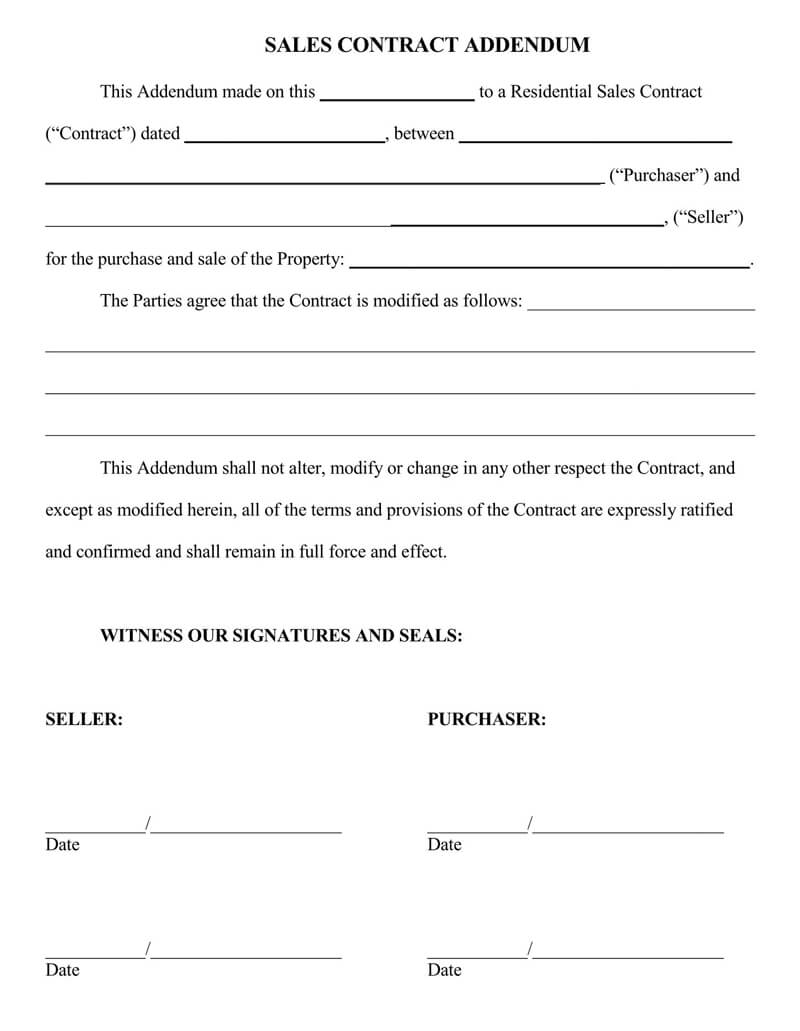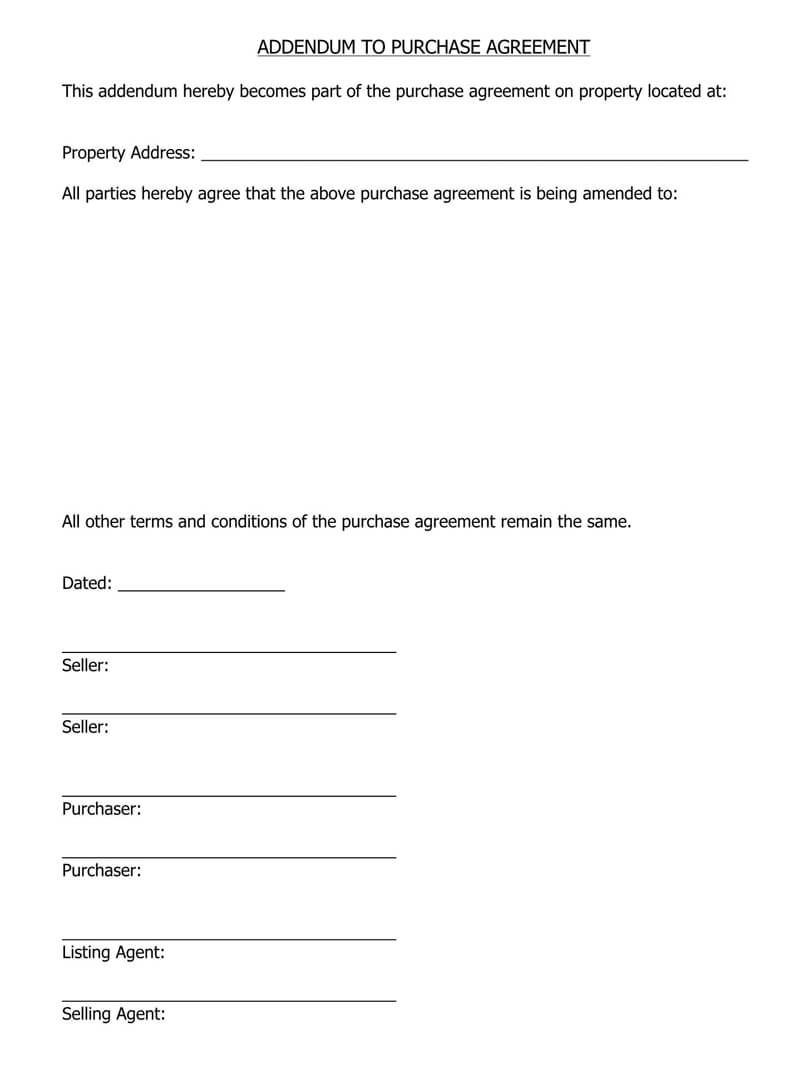It’s not uncommon for parties in a purchase agreement to change their mind about the terms and conditions after signing or think of new details to add. However, they must include an additional document outlining the changes to modify the original contract.
That’s where an addendum to purchase agreement comes into play.
This article will discuss what it is and how it differs from the amendment before exploring the writing guidelines with examples.
What is an Addendum to Purchase Agreement?
An addendum to the purchase agreement is a separate legal document that adds additional terms and conditions to the original contract. It doesn’t change the existing document; it only provides supplementary information. It can explain the provisions, clarify the details, update the deadline and property price, add disclosures, and modify or support other contact information.
All parties must agree to the changes and sign the addendum, whether they wish to modify the terms, clauses, descriptions, dates, or other contract elements. It takes effect once the buyer and the seller sign it and attach it to the purchase agreement.
Besides purchase agreements in real estate, telecommunications, and other industries, you can use addenda for:
- Leases – changing the original contract
- Pets – allowing a tenant to have a pet at the property
- Financing – a seller or a third party agreeing to lend the buyer the necessary funds to buy a property
- Law schools – an applicant submitting a personal statement to address their academic records or potential irregularities
- Insurance – altering the coverage
- Contracts – e.g., modifying employment terms
- Last wills and testaments – changing the original document by drafting a codicil.
When can you typically use it?
These are typical events requiring an addendum:
- Date modifications
- Deadline extensions
- Clause additions or removals
- Parties unsatisfied with specific terms and conditions
- Updated lease agreement terms
- Modified job descriptions in employment contracts
Disclosures
The following disclosures are essential in specific situations to provide homebuyers with the necessary property information and protect sellers from liability.
Lead-based paint addendum
A lead-based paint addendum informs a buyer about potential lead hazards on a specific property. Every seller must attach this disclosure to the purchase agreement when selling pre-1978 residential properties.
Using lead paint in residential dwellings was common before 1978 when the US Consumer Product Safety Commission banned it due to the risk of lead poisoning when the paint chips.
Property disclosure statement
A property disclosure statement outlines any material or structural defects a particular property has to help the buyer make an informed decision and protect the seller from liability. Most US states require it, and sellers must deliver it before entering a purchase agreement.
Property flaws include leaks, moisture, mold, HVAC issues, electric or plumbing system problems, exterior damage, hazardous materials, and other defects.
Addendum vs. Amendment
Including an addendum to the purchase agreement isn’t the same as adding an amendment. The former adds supplemental information to the original terms and conditions, while the latter modifies them.
Here are the essential differences between them.
They affect the contract differently
An addendum provides additional information without altering the original contract. It’s legally binding once either party attaches it to the purchase agreement.
An amendment modifies the initial terms and conditions or nullifies specific sections or clauses. All parties can discuss the changes and revise the terms before reaching a mutual agreement. The amendment then becomes a legally binding part of the original contract.
They are recorded differently
An addendum is a separate document you attach to the purchase agreement. An amendment is a change or addition to an existing contract. The latter includes editing or redlining to enable the parties to make alterations without drafting a new contract. For example, they can cross out specific provisions, modify the closing date, adjust the price, and make other changes.
Different parties execute them
Buyers, sellers, and relevant third parties like title companies can include addenda. However, only the parties who signed the agreement, their legal representatives, or their real estate agents can add amendments.
They differ in frequency
Since you attach addenda to the original contract, you can add as many as you want.
However, adding multiple amendments can make the initial document messy, confusing, and unprofessional. Drafting a new agreement to include all modifications might be better.
Purchase Agreement Addendum Forms
How to Write a Purchase Agreement Addendum
Once you get the original purchase agreement copy as a reference, write an addendum with the following information.
Document date
Include the document’s effective date at the top of the page. That date indicates when the terms and conditions become legally binding.
Here’s how it should look:
Effective Date: ________, 20__
The parties
Information on the parties shows who has legal obligations under the contract.
- Buyer’s information: Include the buyer’s name to identify the person purchasing the property.
- Seller’s information: The seller’s name or the entity selling the property is another essential information to include at the beginning of the document.
Property address
You must specify the property relevant to the real estate transaction, so add its physical address.
Here’s a sample:
This Addendum is part of the Purchase Agreement between ____________ (Buyer) and _____________ (Seller) authorized on ________, 20__ (Agreement) for the property located at ______________, City of _________, State of __________ (Property).
Additional purchase conditions or terms
This section relates to any amendments you wish to make to the original purchase agreement. Describe them in detail to eliminate confusion and the risk of loopholes. A legal counselor can help you write it correctly and comply with the federal, state, and regional statutes.
Here’s how you can start:
Buyer and Seller hereby agree to amend the Agreement as follows: ____________________________
Contingencies
Contingency addenda protect the buyer in specific situations, giving them an easy way out if an unexpected circumstance makes the sale fall through.
Here are typical contingencies in real estate:
- Home inspection: The buyer agrees to hire a certified home inspector. If the seller refuses to fix potential property issues or reduce the price, the buyer can terminate the contract and get their deposit back (earnest money or “good faith deposit”).
- Home sale: If the buyer can’t sell their existing home within a specified period, they can back out of the contract and recover their earnest money.
- Appraisal: The purchase price must match the property’s fair market value. Otherwise, the buyer can renegotiate the price or end the agreement without losing the deposit.
- Financing or mortgage: The buyer can rescind their offer and recover the earnest money if they don’t get the necessary funds within a specified timeframe.
Disclosures
Disclosures are crucial to inform the buyer about potential property issues, including material or structural defects, environmental hazards, and federal, state, and local taxes.
HOA documents
The seller must include the Homeowners Association’s (HOA) governing documents if the property is part of the HOA. They outline the rules, regulations, terms, and conditions the members must follow.
HOA documents include:
- Articles of Incorporation: the HOA information
- Bylaws: the HOA’s technical rules and procedures
- Declaration of Covenants, Conditions, and Restrictions (CC&Rs): the HOA’s rights and responsibilities
- Rules and Regulations: interpreting and implementing the CC&Rs
Consents and waivers
Not every change to the original terms and conditions requires an addendum to the purchase agreement. The parties can agree to waive a contract breach in specific situations that don’t negatively affect them.
For instance, the seller can agree to proceed with the sale if the prospective buyer’s payment is a few days late. The buyer can also waive real estate contingencies (e.g., an appraisal contingency if they can make a cash offer). Whichever the case, the parties must include a waiver or consent specifying the terms.
Executing signatures
Both parties must sign the document to make it valid. Here’s how to execute the signatures.
- Buyer’s signature: Once the buyer reviews and agrees on the changes, they must sign the new document to make it part of the initial agreement.
- Date: Like the document’s effective date, this date shows when the buyer agreed to the modifications.
- Buyer’s printed name: The signature block should also include the buyer’s name in print, like at the beginning of the document.
Here’s how the block should look:
Buyer’s Signature _____________ Date _________
Print Name ______________
- Seller’s signature: The same rules apply to the seller, whose signature indicates approval of the alterations. In addition, the seller’s legal representative or agent can sign the document if the seller is an entity.
- Date: The seller must provide the date when they approved the changes to the original contract.
- Seller’s printed name: The seller should also have their respective line for their name in print. If an entity’s representative signs the document, they must put their name in print and specify their title.
The seller’s signature block is the same as above:
Seller’s Signature _____________ Date _________
Print Name ______________
Both parties must agree to the changes and sign an addendum to the purchase agreement to make it valid and legally binding. They can authorize agents to sign it if they’re currently unavailable.
Some state and contract laws require addenda to have the so-called consideration to make them valid. That specifies a particular benefit each party can enjoy after finalizing the contract. Contact an attorney to see if this additional consideration is mandatory in your state.
Free Addendum to Purchase Forms
Laws Governing Addenda to Purchase Agreements
You can’t enforce an addendum to the purchase agreement if it doesn’t comply with the initial terms and conditions.
For instance, your original contract may have specifications regarding addenda, including preventing either party from adding them or allowing one to make adjustments without the other party’s consent. Whichever the case, check out your state laws to avoid legal trouble.
One unique set of state laws governing commercial transactions in the US (including purchase contracts) is the Uniform Commercial Code (UCC). It requires all parties to agree to supplemental information, which doesn’t have to include consideration.
Final Remarks
An addendum to the purchase agreement is a vital document outlining the specifics that support the initial contract. Unlike amendments, it doesn’t change the terms and conditions but provides additional information or rules the parties must follow.
The examples above have undoubtedly made the process less complicated, but you can also download our free samples for inspiration. Then, you can tailor them to your needs and have an attorney ensure your legal compliance.
